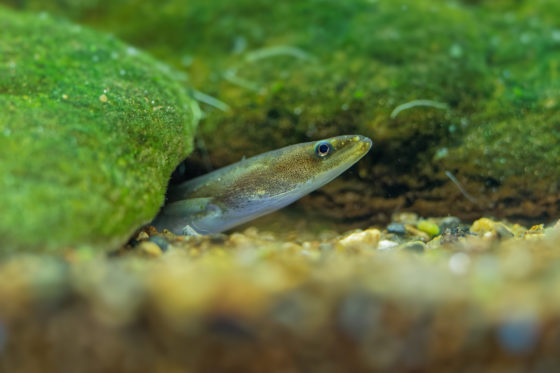
European eel remains critically endangered with recruitment under 10 % of historical levels. The International Exploration of the Sea, ICES, published its scientific advice on fishing opportunities and conservation for European eel for 2025 today. As in previous years, ICES advises zero catch for for all life stages, all uses and in all habitats. The conservation advice is to reduce other human-related mortalities to zero and restore habitats.
The scientific advice on European eel makes very clear that no catches can be considered sustainable and that the “zero catch” also applies to glass eel landings for restocking and aquaculture. The message is reinforced by the advice on conservation aspects, highlighting the need to reduce other anthropogenic mortalities to zero, as well as restore both the quantity and quality of eel habitats.
The European eel (Anguilla anguilla) has been listed as Critically Endangered by IUCN since 2008, and is on the European Red List for freshwater fish. It is also included in Appendix II of the Convention on Migratory Species (CMS) and listed in Appendix II of the Convention on International Trade in Endangered Species of Wild Fauna and Flora (CITES) since 2007.
Despite the need for protection and efforts to aid its recovery, European eel continues to be fished across most of its natural range. In the past decade, total reported commercial landings of yellow and silver eel have remained above 2 000 tonnes per year, with several countries reporting annual landings of over 100 tonnes according to ICES. Over the same time period, commercial glass eel landings remained at an average of 57.4 tonnes. Where available, estimates of recreational landings of yellow and silver eels show that they can be of the same order of magnitude as those of commercial fisheries. All in contradiction with the scientific advice. Only Ireland, Slovenia, Malta and Norway have closed all fishing for the species.
Management in the EU is primarily through the Council Regulation (EC) No 1100/2007 establishing measures for the recovery of the stock of European eel. However, a 2022 Special Request Advice from ICES on its implementation showed that no overall progress has been made in reaching the objective on increased silver eel escapement.
The need for further measures to aid eel recovery has been debated and implemented across and beyond the EU, but these are not sufficient. Eel fishing closures, together with a complete ban of recreational fishing, intended to protect eel migration and recruitment have been adopted in EU marine waters, yet fishing mortality for both glass eels and silver eels remain too high. In the Mediterranean, temporary management measures for European eel were agreed in 2018. Next week the General Fisheries Committee for the Mediterranean (GFCM) is expected to agree on long-term management measures for the region.
– Current management of European eel is clearly not at all in line with the scientific advice, says Niki Sporrong, Senior Policy Officer & European eel Project Manager at FishSec. Agreed fisheries and biodiversity objectives to rebuild fish stocks are simply not applied to European eel. These commitments need to be implemented now, in both inland, EU and international waters.